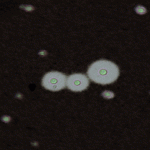A. Clinical Manifestations
The classic triad of fever, headache and meningeal irritation (neck stiffness) sometimes do not occur altogether. Occasionally, patients may also have altered sensorium. Meningitis can be classified into acute, subacute, and chronic meningitis. Acute meningitis is characterized by onset of symptoms over the course of hours to up to several days. Subacute meningitis often has insidious onset. By definition, chronic meningitis would have compatible symptoms for at least 4 weeks.
B. Aetiology
The aetiological agents that can cause meningitis include bacteria, viruses, fungi, and even parasites. Patients in different age groups who have different underlying predispositions and environmental exposures would have different pathogens. In general, acute meningitis is usually caused by bacteria or viruses, while subacute or chronic meningitis are usually caused by mycobacteria, fungi, or atypical bacteria.
i) Acute meningitis:
Common causes of acute pyogenic meningitis:
| Age 0 – 8 weeks | Escherichia coli (K1) |
| Streptococcus agalactiae (group B type III) | |
| Listeria monocytogenes | |
| Other Enterobacteriaceae eg. Salmonella sp. | |
| 3 months – 18 years | Haemophilus influenzae serotype b* |
| Neisseria meningitidis | |
| Streptococcus pneumoniae | |
| 18 years – 50 years | Streptococcus pneumoniae |
| Neisseria meningitidis | |
| > 50 years | Above 2 and aerobic Gram-negative bacilli (e.g. Klebsiella sp., Escherichia sp., Salmonella sp.) |
| Immunocompromised hosts | Above 3 and Listeria monocytogenes, Pseudomonas aeruginosa |
| Occupational / exposure to pigs | Streptococcus suis |
| Exposure to contaminated fresh water | Nagleria fowleri & other free-living amoeba (high mortality) |
| Ingestion of raw mollusk | Angiostrongylus cantonensis (eosinophilic meningitis) |
| Head trauma, intrathecal injection and post-neurosurgery | Staphylococcus aureus |
| Staphylococcus epidermidis | |
| Aerobic Gram-negative bacilli | |
| Aspergillus sp.; other molds | |
| Post-shunting | Above 3 and Proprionibacterium acne |
* Meningitis due to Haemophilus influenzae b has reduced markedly after routine immunization was introduced in some countires
The type of organism can be predicted by the route of acquisition of organisms and immune status. Common causes of viral meningitis is often the cause of acute encephalitis and include enteroviruses, Japanese encephalitis virus, mumps virus, herpes simplex types 1 & 2, varicella zoster virus and often as part of an infectious mononucleosis-like syndrome: human immunodeficiency virus (HIV), cytomegalovirus (CMV) and Epstein-Barr virus (EBV).
ii) Subacute to chronic meningitis:
Common etiological agents of subacute and chronic meningitis include:
1) Mycobacterium tuberculosis
2) Cryptococcus neoformans
3) Treponema pallidum (syphilis)
4) Borrelia burgdorferi (Lyme’s disease)
5) Nocardia sp. (most patients are immunosuppressed)
6) Others: dimorphic fungi, Candida sp., Acanthamoeba sp., Angiostrongylus sp., Brucella sp.
Tuberculous meningitis:
This often results from the rupture of a superficial infective granuloma on the pia mater into the subarachnoid space. Young patients often have concomitant progressive pulmonary / systemic disease whereas older patients may have no other clinically evident foci.
Cryptococcal meningitis:
Patients with cryptococcal meningitis often present with a subacute onset of headache and dementia. 50% of these patients have an underlying immunodeficiency disorder, e.g. AIDS, lymphoma, receiving immunosuppressant therapy (such as steroids), had a history of transplantation etc.
C. Diagnosis
The diagnosis of meningitis depends on the examination of the CSF. CSF should be sent for cell count and differential count, glucose and protein. Microbiological investigations including Gram smear, bacterial culture, Ziehl-Neelson smear, mycobacterial culture, Indian ink examination, fungal culture, rapid bacterial antigen detection (Group B Streptococcus, E. coli K1, Streptococcus pneumoniae, Neisseria meningitidis, and Haemophilus influenzae type b), VDRL for syphilis, PCR/RT-PCR for Mycobacterium tuberculosis, herpes simplex virus, and enterovirus, viral culture, and even wet mount should be considered depending on the clinical scenario. A minimal of 10 mL CSF should be collected (especially if various investigations are required).
Typical CSF findings
| Cause | WBC (cells/mm3) | Cell type | Glucose (mg/dL) | Protein (mg/dL) |
| Viral | 50–1000 | Mononuclear | >45 | <200 |
| Bacterial | 1000–5000 | Polymorphonuclear | <40 | 100–500 |
| Tuberculosis | 50–300 | Mononuclear | <45 | 50–300 (or higher) |
| Cryptococcus | 20–500 | Mononuclear | <40 | >45 |
Typical CSF findings in patients with tuberculous meningitis:
- Fluctuating cerebrospinal fluid (CSF) findings
- Lymphocytic /mononuclear pleocytosis of 50 to 300 cells (except in very early stage when polymorphs dominate)
- High protein, low CSF to serum glucose level
- Zeihl-Neelsen smear positive (<15%, Figure 1)
- CSF culture positive (<50%)
- Sputum culture positive (<30%)
- Figure 1
Figure 1. Presence of acid fast bacilli can be seen when the CSF is being stained with Zeihl-Neelsen stain
Typical CSF findings in patients with cryptococcal meningitis:
- Lymphocytic /mononuclear pleocytosis (20 to 500 cells)
- High protein, low CSF to serum glucose level (55%)
- Positive Indian ink examination (50%, Figure 2)
- Positive CSF cryptococcal antigen (85%)
- Positive serum cryptococcal antigen and / or CSF antigen (94%)
- Positive fungal culture (90%)
- Figure 2
Figure 2. CSF microscopy findings of a patient with cryptoccocal meningitis. An area of ‘negative stain’ can be appreciated when the CSF is smeared with Indian ink. This corresponds to the large halo of capsular material which encloses the budding yeast.
D. Management
The current management strategies consist of early use of empirical antibiotics +/- steroids. The antibiotic regimen should be able to penetrate the blood-brain barrier and therefore a high dose of antibiotics is usually necessary. The regimen can then be later guided by culture results when they are available. It is necessary to watch out for complications (e.g. hydrocephalus, stroke, and seizures). For conditions which are often associated with hydrocephalus (e.g. cryptococcal meningitis), repeated lumbar puncture +/- shunt insertion may be required.
Use of corticosteroid in acute bacterial meningitis
The findings are currently inconclusive, as evidenced by 3 different recent meta-analyses:
- Reports published from 1966–2008 of placebo-controlled randomized trials of corticosteroid use in the treatment of adolescents and adults with acute bacterial meningitis. The administration of corticosteroids resulted in a lower short-term mortality rate than did the administration of placebo in high-income countries and in the studies with a low prevalence of infection with HIV. In studies from high-income countries, the number needed to treat with corticosteriods to prevent 1 death and 1 neurologic sequela was 12.5 and 11 respectively.
- Treatment with dexamethasone was associated with a non-significant lower mortality than placebo or no treatment. Dexamethasone was associated with lower mortality in patients with definite meningitis, short duration of symptoms, Streptococcus pneumoniae meningitis and patients in countries with medium to high Human Development Index. Dexamethasone was associated with fewer episodes of hearing impairment in high quality randomized-controlled trials.
- Dexamethasone was not associated with a significant reduction in death, severe neurological sequelae or hearing impairment. However, dexamethasone seemed to reduce hearing loss among survivors. Dexamethasone had no effect in any of the prespecified subgroups, including specific causative organisms, pre-dexamethasone antibiotic treatment, HIV status, or age. Pooling of the mortality data with those of all other published trials did not significantly change the results.
The benefit of adjunctive dexamethasone for all or any subgroup of patients with bacterial meningitis thus remains unproven.
Use of corticosteroids in tuberculous meningitis
Tuberculous meningitis is associated with high mortality and disability among survivors. In a recent review, 7 trials involving 1140 patients (with 411 deaths) with tuberculosis meningitis were analyzed. All used dexamethasone or prednisolone. Overall, corticosteroids reduced the risk of death (RR 0.78, 95% CI 0.67 to 0.91; 1140 participants, 7 trials). Data on disabling residual neurological deficit from 3 trials revealed that corticosteroids reduce the risk of death or disabling residual neurological deficit (RR 0.82, 95% CI 0.70 to 0.97; 720 participants, 3 trials). Adverse events included gastrointestinal bleeding, bacterial and fungal infections and hyperglycaemia, but they were mild and treatable.
Corticosteroids should be routinely used in HIV-negative patients with tuberculous meningitis to reduce death and disabling residual neurological deficit amongst survivors. However, there is not enough evidence to support or refute a similar conclusion for those who are HIV-positive.
Indications of post-exposure prophylaxis
Close contacts of patients suffering from infection due to certain microorganisms such as Haemophilus influenzae type b and Neisseria meningitidis require chemoprophylaxis (e.g. rifampicin or ciprofloxacin).
 HKU E-learning Platform in Clinical Neurosciences HKU eLearning Platform in Clinical Neurosciences
HKU E-learning Platform in Clinical Neurosciences HKU eLearning Platform in Clinical Neurosciences


